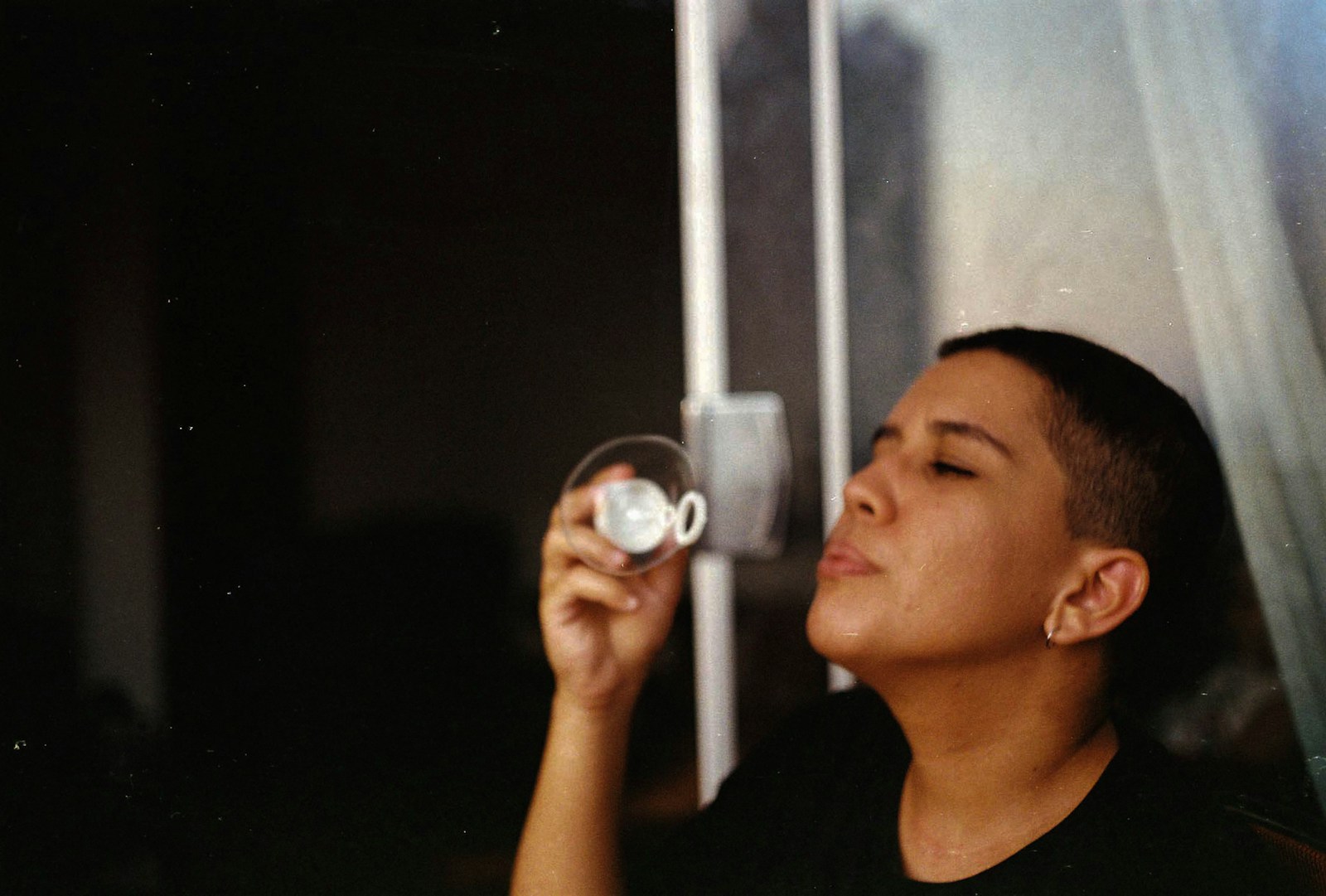In Enfield, Connecticut, an incident at a local ShopRite has sparked a significant debate on workplace dress code policies and discrimination. The controversy arose when an 18-year-old employee, the daughter of former NFL player Andrew Pinnock, was sent home because her braids contained red coloring. This decision led to widespread community support and criticism of the store’s actions.

1. **The Incident Unfolds**: Initially, the employee was informed by the management to remove the red color from her hair before she could return to work. This directive was in stark contrast to ShopRite’s declared inclusive dress code policies. Notably, the employee was handed a ShopRite-branded durag as a temporary solution, which further highlighted the perceived discrimination.
The choice to send the young employee home for her hairstyle was quickly met with backlash. Community members, including the Connecticut NAACP, rallied outside the ShopRite doors, demanding accountability and policy revision. The CT NAACP President, Scot X. Esdaile, emphasized the importance of judging individuals based on character rather than appearance, referencing Dr. Martin Luther King Jr.’s teachings.
2. **A Personal Account of Discrimination**: Andrew Pinnock, deeply affected by his daughter’s experience, shared his emotional turmoil. He recounted how his daughter felt the need to alter her appearance in the car, highlighting her confusion and distress. Pinnock’s visit to the store revealed inconsistencies in the enforcement of the dress code, as he observed other employees with non-compliant hairstyles and piercings.
Pinnock’s confrontation with the HR manager led to a temporary compromise, but it was a solution that lacked empathy and understanding. It underscored the necessity for dialogue and change, rather than hasty judgments based on appearances.
3. **The CROWN Act and Its Implications**: This incident occurred in the context of the CROWN Act, a law signed by Governor Ned Lamont in 2021, which prohibits discrimination based on hairstyles associated with race. State Representative Robyn Porter highlighted the store’s violation of this law, questioning the message sent to employees about their identity and worth.
Despite being a protective measure intended to safeguard employees’ rights, this legislation’s enforcement was called into question. It underscored the gap between policy and practice, urging for more rigorous oversight and accountability.
4. **Community Leaders Speak**: Former Bloomfield Mayor, Suzette Brown, articulated a powerful sentiment that resonated with many. She argued that employment should focus on performance and service, not appearance. Her statements echoed the broader community’s call for inclusivity and respect within the workplace.
5. **Pressure for Policy Change**: The CT NAACP’s demands for a verbal and written apology, along with revised policies, signaled a push towards institutional change. The planned demonstration at ShopRite aimed to bring further attention to the issue, advocating for fairness and equality.
6. **ShopRite’s Response**: In response to the outcry, ShopRite’s managing partner, Harry Garafalo, issued a statement asserting that the store’s policies “strive to be inclusive” and denied any legal violation. This response was met with skepticism, as the broader implications of the incident continued to unfold.
7. **The Broader Impact of Hair Discrimination**: The incident at ShopRite is not isolated. It reflects a pervasive issue of hair discrimination that affects Black Americans disproportionately. Columnist Lynn Norment aptly captured this in her discussion of the CROWN Act and the enduring struggle for acceptance and equality.
8. **Systemic Issues and Historical Context**: The history of hair discrimination is deeply rooted in systemic racism. Policies prohibiting natural hairstyles have long been used to marginalize Black individuals, despite ongoing efforts to combat these biases through legislation like the CROWN Act.
The ShopRite incident serves as a poignant reminder of the work that remains to be done in achieving true inclusivity and respect for cultural identity within the workplace.
9. **Community’s Call to Action**: The aftermath of the incident at ShopRite sent ripples through the community, prompting a call to action that was both immediate and fervent. Community gatherings became a platform for voicing dissent, bringing together a diverse array of individuals united by a common cause: to combat discrimination and champion inclusivity. Leaders from various sectors echoed the sentiment that this incident was more than just about hair; it was about respect, dignity, and the right to express one’s identity freely.
The gathering led by the Connecticut NAACP was a testament to the power of community mobilization. Attendees shared personal stories of discrimination, creating an emotional tapestry that underscored the need for systemic change. The voices of the community amplified the urgency for policies that not only protect but celebrate diversity, urging leaders at every level to take decisive action.
10. **The Role of Social Media**: In today’s interconnected world, social media has emerged as a powerful tool for advocacy and change. The ShopRite incident quickly spread across various platforms, with hashtags and posts gaining traction and drawing attention to the broader issue of hair discrimination. This digital wave of support brought national attention to the situation, highlighting the role of social media in shaping public opinion and influencing corporate and legislative responses.
The viral nature of the story saw individuals from all walks of life sharing their experiences and showing solidarity. This digital engagement not only kept the conversation alive but also put pressure on institutions to address the concerns being raised. The online community’s outrage served as a catalyst for bringing about more immediate responses from those in positions of power.
11. **The Legal Landscape**: The CROWN Act represents a significant advancement in the fight against race-based hair discrimination. Despite its existence, this legislation has faced challenges in its enforcement, as seen in the case of the ShopRite employee. The act’s intent is clear: to eliminate discriminatory practices and ensure that individuals can embrace their cultural identities without fear of retribution.
Legal experts have pointed out that while the act provides a framework for protection, the real challenge lies in its implementation. Instances like the ShopRite incident reveal gaps in awareness and understanding, both at the managerial and employee levels, necessitating ongoing education and training to ensure compliance and respect for the law.

Product on Amazon: The Writer’s Legal GPS: A Guide for Navigating the Legal Landscape of Publishing (a Sidebar Saturdays Desktop Reference) (Sidebar Saturdays Desk Reference)
Price: 14.99 USD
Rating: 4.7 Total reviews: 29
Top Review from US: “The Writer’s Legal GPS is a marvelous reference guide. I purchased the eBook version, so read the book cover to cover. A fair amount of the information presented was repetitive, as one might expect from any desktop reference, but I did not find the repetition distracting. “
Shopping on Amzon >>
12. **Corporate Accountability**: In the wake of the backlash, corporations like ShopRite are compelled to reevaluate their internal policies and practices. This incident highlighted the importance of corporate accountability in fostering an inclusive work environment. As public demand for transparency and equitable treatment grows, companies are increasingly under scrutiny to demonstrate their commitment to diversity and inclusion.
ShopRite’s initial response, while denying any legal violation, was met with skepticism. The broader conversation now shifts towards how corporations can proactively work to align their policies with the values of inclusivity and respect, ensuring that such incidents do not recur. This involves not only revising dress codes but also fostering a culture where diversity is truly embraced.

Product on Amazon: Supportive Accountability: How to Inspire People and Improve Performance
Price: 14.95 USD
Rating: 4.5 Total reviews: 275
Top Review from US: “”Supportive Accountability: How to Inspire People and Improve Performance” by Sylvia Melena is a must-read for anyone seeking to enhance their leadership skills and drive organizational success. Melena’s book is a compelling guide that goes beyond mere management techniques, focusing on the art of supportive leadership.”
Shopping on Amzon >>
13. **Educational Institutions and Dress Codes**: The discussion around dress codes extends beyond workplaces and into educational institutions. Schools, much like businesses, play a crucial role in shaping perceptions around identity and acceptance. The enforcement of dress codes in schools has often mirrored the discriminatory practices seen in workplaces, necessitating a comprehensive reevaluation of these policies.
Educators and policymakers are called to action to ensure that dress codes respect cultural identities and do not perpetuate stereotypes or biases. By fostering an environment of acceptance and understanding, educational institutions can contribute significantly to the broader movement against hair discrimination.
14. **Voices for Change**: Advocacy groups and community leaders continue to be instrumental in driving change and holding organizations accountable. Their unwavering commitment to justice and equality inspires others to join the cause, creating a collective force for change. These voices are crucial in maintaining the momentum of the movement, ensuring that the issue of hair discrimination remains at the forefront of discussions on diversity.
Through public demonstrations, policy advocacy, and education campaigns, these groups work tirelessly to dismantle the barriers of discrimination. Their efforts remind us that while progress has been made, the journey towards true equality and acceptance is ongoing.
15. **The Cultural Significance of Hair**: Hair, for many Black individuals, is not just a style but a symbol of cultural heritage and personal identity. The artistry and significance of natural hairstyles are deeply rooted in history, and any attempt to suppress these expressions is an affront to cultural dignity. This understanding is crucial for fostering a world where diversity and individuality are celebrated rather than stigmatized.

In honoring the cultural significance of hair, society can move towards a more inclusive future, where acceptance is not contingent upon conformity but is instead rooted in respect for all individuals’ unique expressions.
16. **Looking Ahead**: As the community in Enfield and beyond continues to push for change, the ShopRite incident serves as a reminder of the ongoing battle against discrimination. The efforts to address hair discrimination are part of a broader struggle for equality, requiring commitment from individuals, communities, and institutions alike.
The path forward involves not just legislative change but a cultural shift in how we perceive identity and expression. By embracing diversity in all its forms, society can ensure that future generations inherit a world where they are free to be their authentic selves, without fear of judgment or discrimination.
The story of the young ShopRite employee is a powerful testament to the resilience of individuals and communities in the face of discrimination. It reminds us that while the path to equality is long, it is one worth pursuing, for it is only through shared understanding and respect that we can truly celebrate the richness of our collective humanity.
Related posts:
CT NAACP: Enfield ShopRite employee faced discrimination because of hair color
Despite the CROWN Act, Black Americans’ hair continues to be the target of discrimination
Schools say dress codes promote discipline, but many Black students see traces of racism




